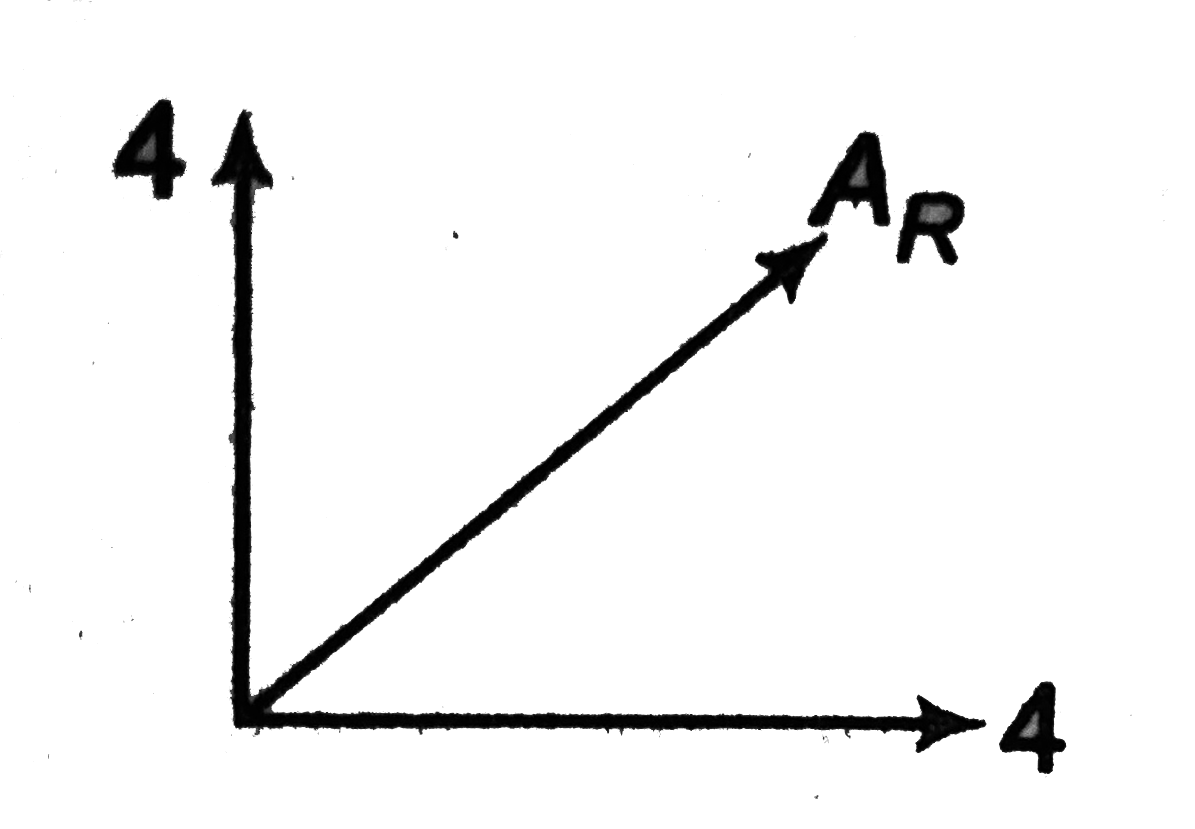Two waves are travelling in same direction along a stretched string. The waves are 90∘ out of phase. Each wave has an amplitude of 4.0 cm. Find the amplitude of the resultant wave.
The correct Answer is:C
AR=4(√2)cm
=5.66cm

Topper's Solved these Questions
- BOOK - DC PANDEYCHAPTER - SUPERPOSITION OF WAVESEXERCISE - Subjective Questions6videos
SUPERPOSITION OF WAVES
- BOOK - DC PANDEYCHAPTER - SUPERPOSITION OF WAVESEXERCISE - Level 2 Single Correct15videos
SUPERPOSITION OF WAVES
- BOOK - DC PANDEYCHAPTER - SUPERPOSITION OF WAVESEXERCISE - Objective Questions1videos
SUPERPOSITION OF WAVES
- BOOK - DC PANDEYCHAPTER - SOUND WAVESEXERCISE - Exercise 19.74videos
SOUND WAVES
- BOOK - DC PANDEYCHAPTER - THERMOMETRY THERMAL EXPANSION AND KINETIC THEORY OF GASESEXERCISE - Medical entrance gallary30videos
THERMOMETRY THERMAL EXPANSION AND KINETIC THEORY OF GASES
Similar Questions
What phase difference between two identical traveling waves, moving in the same direction ulung a stretched string, results in the combined wave having an amplitude 0.852 times that of the common amplitude of the two combining waves! Express your answer in (a) degrees (b) radiants, and (c) wavelengths
View SolutionTwo sinusoidal waves of the same period, with amplitudes of 5.0 and 7.0 mm, travel in the same direction along a stretched string, they produce a resultant wave with an amplitude of 10.0 mm. The phase constant of the 5.0mm wave is 0. What is the phase constant of the 7.0mm wave?
View SolutionTwo waves, each having a frequency of 100Hz and a wavelength of 2cm, are travelling in the same direction on a string. What is the phase difference between the wayes (a) if the second wave was produced 10m sec later than the first one at the same place (b) if the two waves were produced at a distance 1cm behind in the second one? (c) if each of the wave has an amplitude of 2.0mm, what would be the amplitude of the resultant waves in part (a) and (b) ?
View SolutionTwo waves, travelling in the same direction through the same region, have equal frequencies, wavelengths and amplitudes. If the amplitude of each wave is 4 mm and the phase difference between the waves is 90∘, what is the resultant amplitude ?
View SolutionTwo waves, each having a frequency of 100 Hz and a wavelength of 2.0 cm, are travelling in the same direction on a string. What is the phase difference between the waves (a) if the second wave was produced 0.015 s later than the first one at the same place, (b) if the two waves were produced at the same instant but the first one was produced a distance 4.0 cm behind the second one ? (c) If each of the waves has an amplitude of 2.0 mm, what would be the amplitudes of the resultant waves in part (a) and (b) ?
View SolutionTwo identical sinusoidal waves, moving in same direction along a stretched string, interfere, with each other. The amplitude of each wave is 10.0mm, and the phase difference between them is 80∘. What is the amplitude of the resultant wave and the nature of interference ?
View SolutionThese two waves travel along the same string:
y(x,t)=(4.00mm)sin(2πx−650πt)
y2(x,t)=(6.20mm)sin(2nπ−650πt+0.60xrad). What are (a) the amplitude and (b) the phase angle (relative to wave 1) of the resultant wave? (c) If a third wave of amplitude 5.00 mm is also to be sent along the string in the same direction as the first two waves, what should be its phase angle in order to maximize the amplitude of the new resultant wave?View SolutionTwo sinusoidal waves of the same frequency travel in the same direction along a string. If A1=m3.0cm,A2=4.0cm,ϕ1=0, and ϕ2=π/2rad, what is the amplitude of the resultant wave ?
View SolutionTwo identical sinusoidal waves, moving in the same direction along a stretched string, interfere with each other. The amplitude y of each wave is 9.8 mm, and the phase difference p between them is 100∘.
(a) What is the amplitude y. of the resultant wave due to the interference, and what is the type of this interference?
(b) What phase difference, in radians and wavelengths, will give the resultant wave an amplitude of 4.9 mm?View SolutionTwo sinusoidal waves of the same frequency travel in the same direction along a string. If ym1=2.0cm,ym2=4.0cm,ϕ1=0,andϕ2=π/2rad, what is the amplitude of the resultant wave?
View Solution

